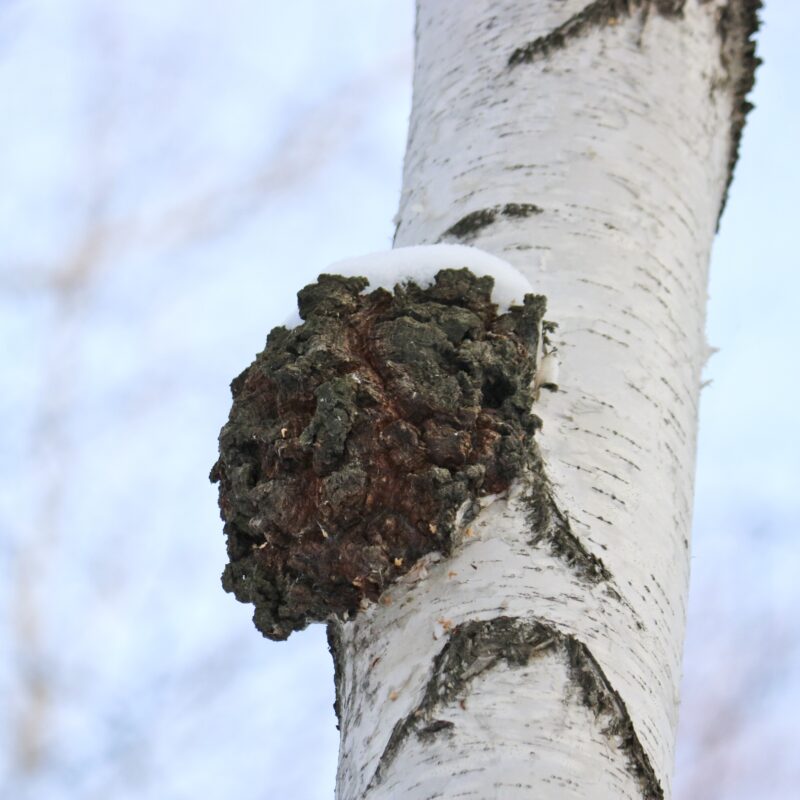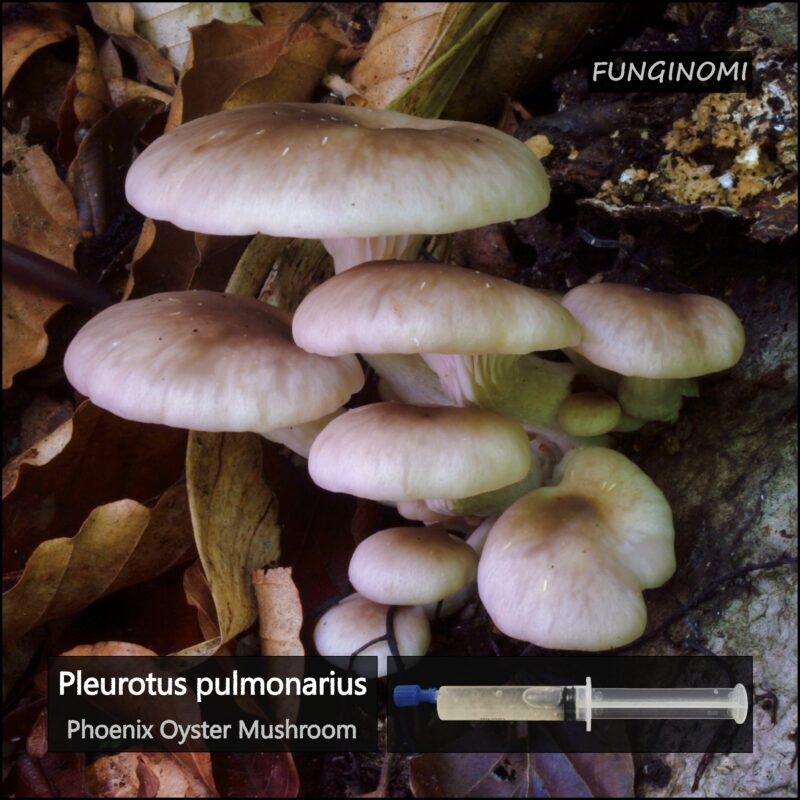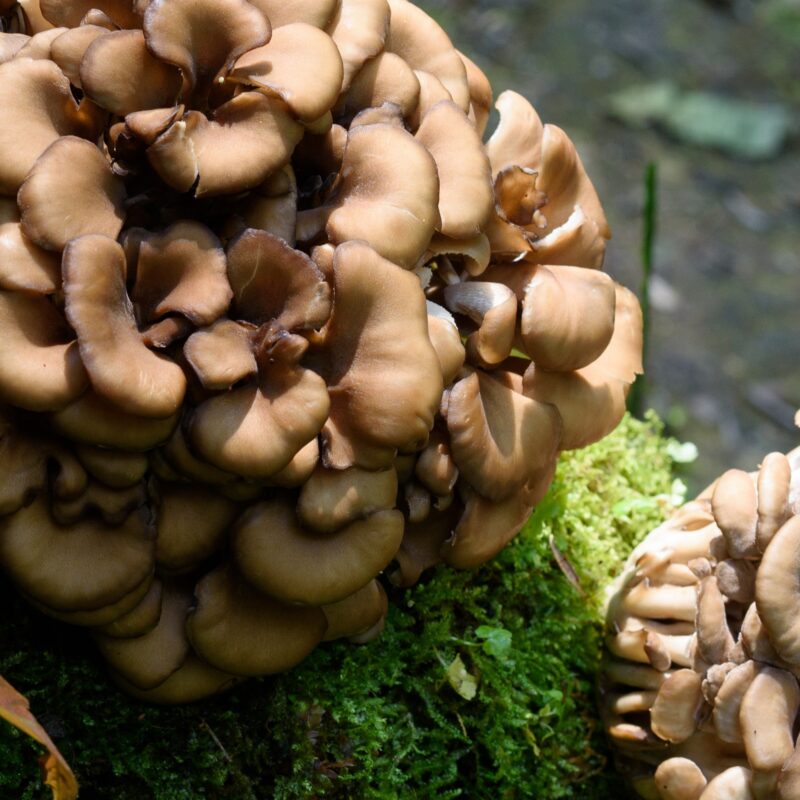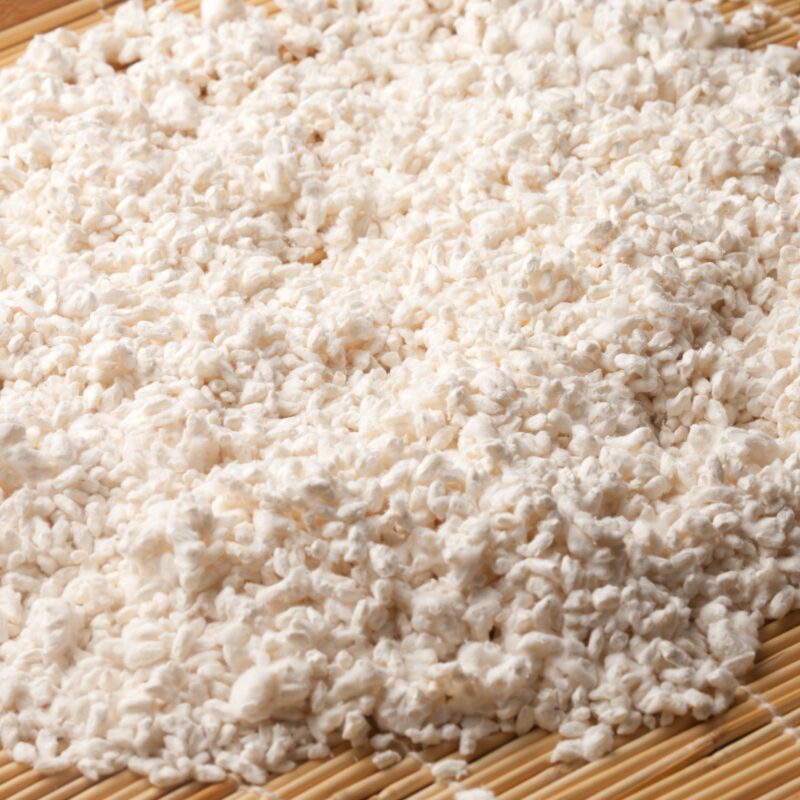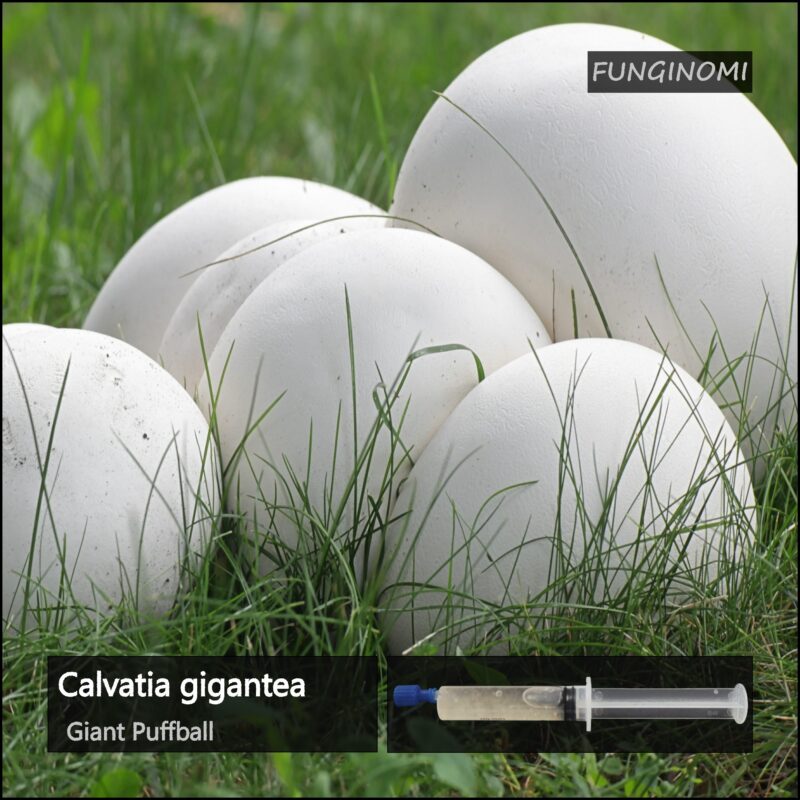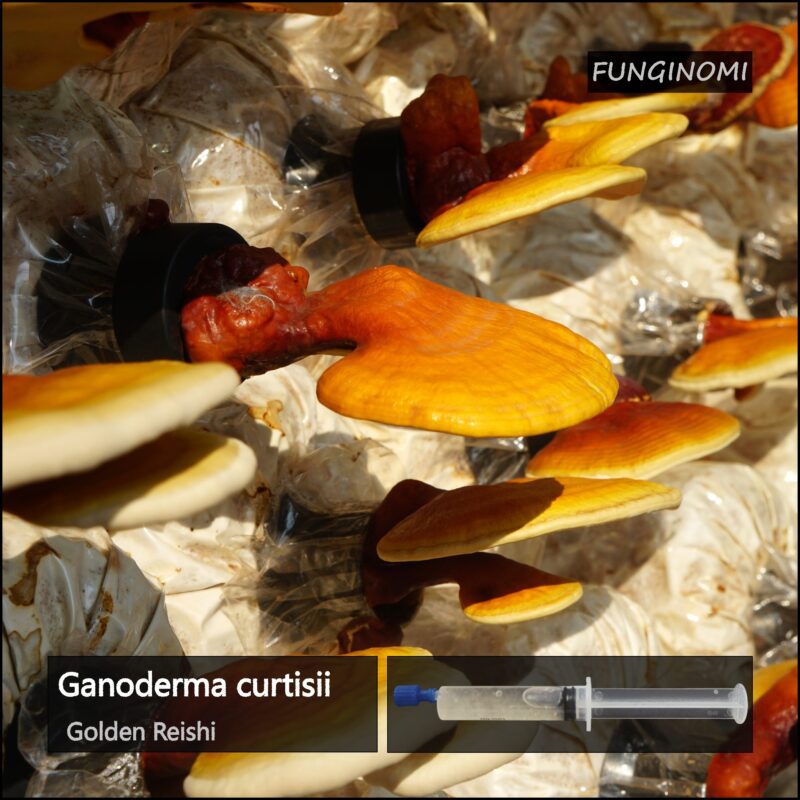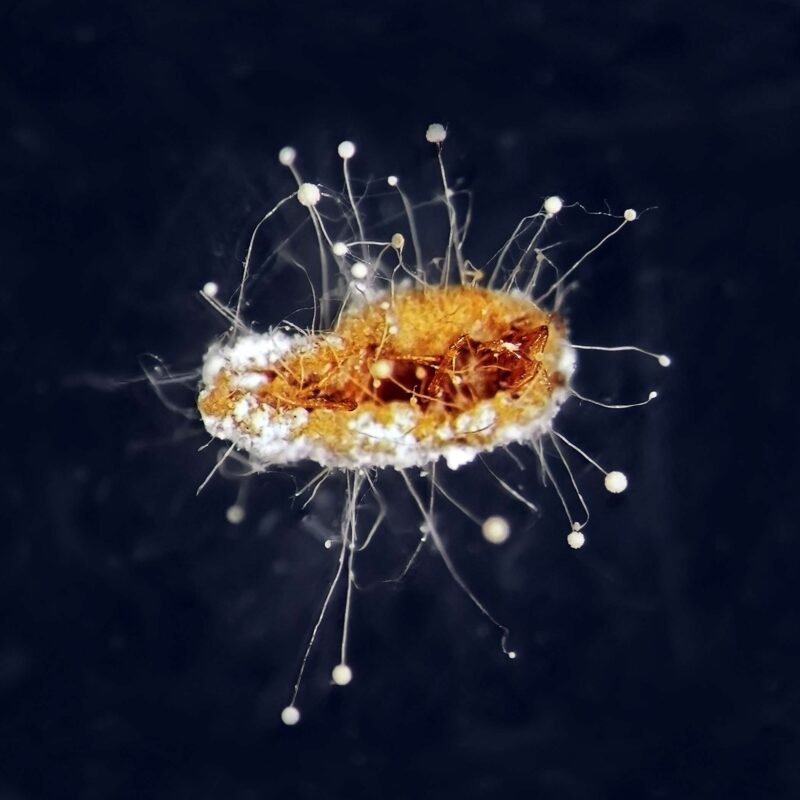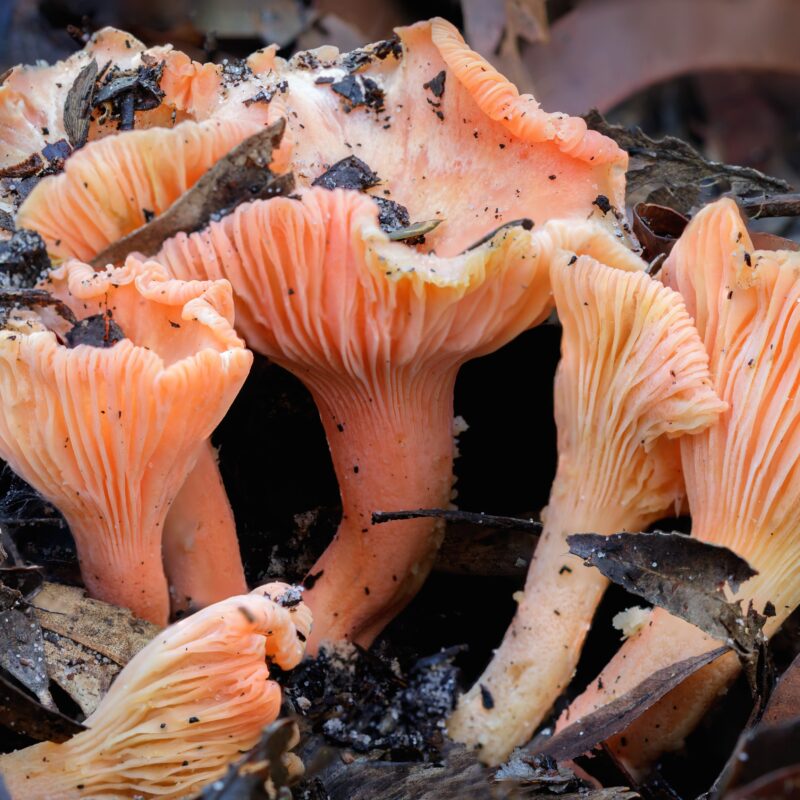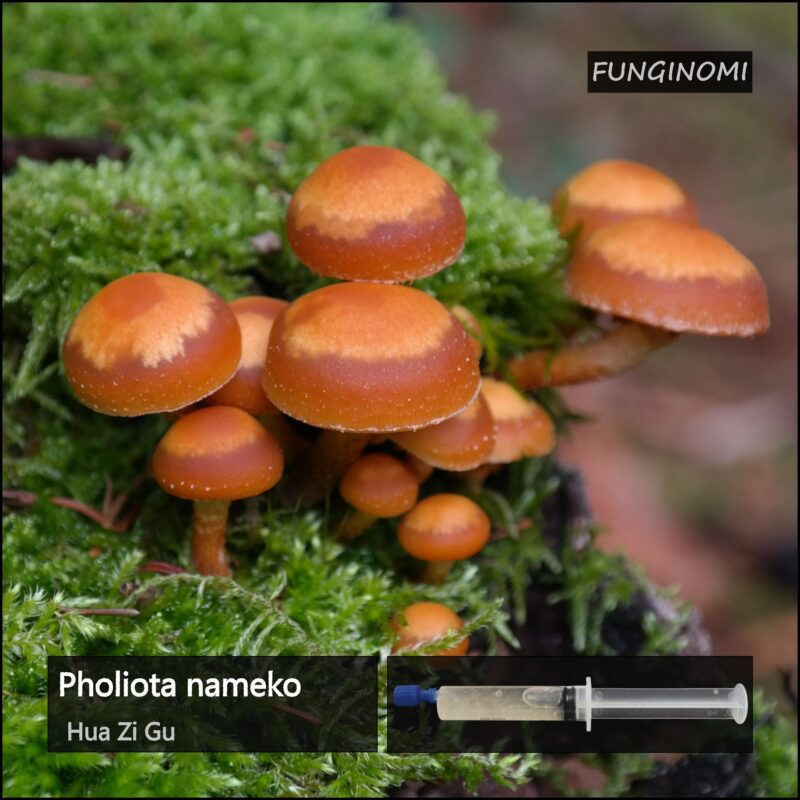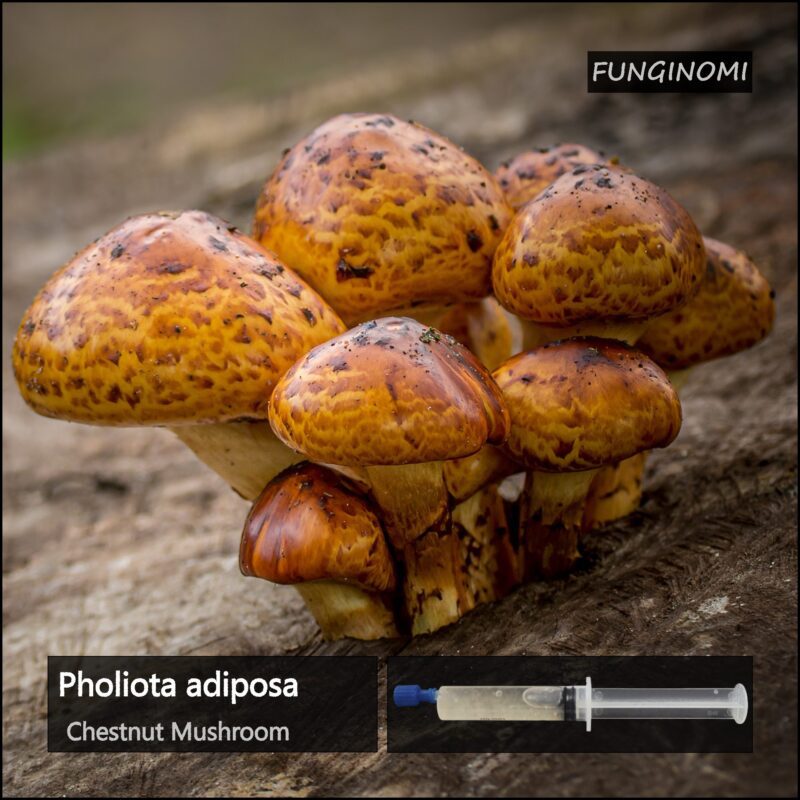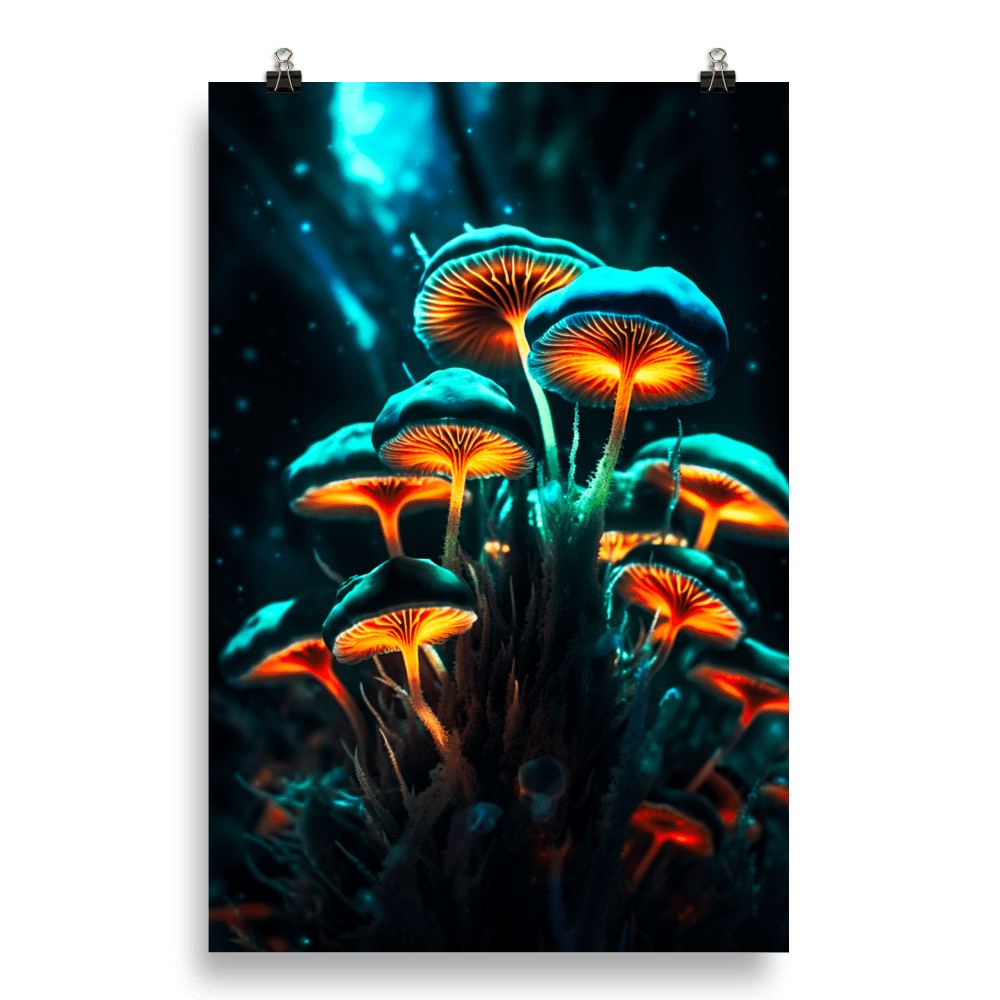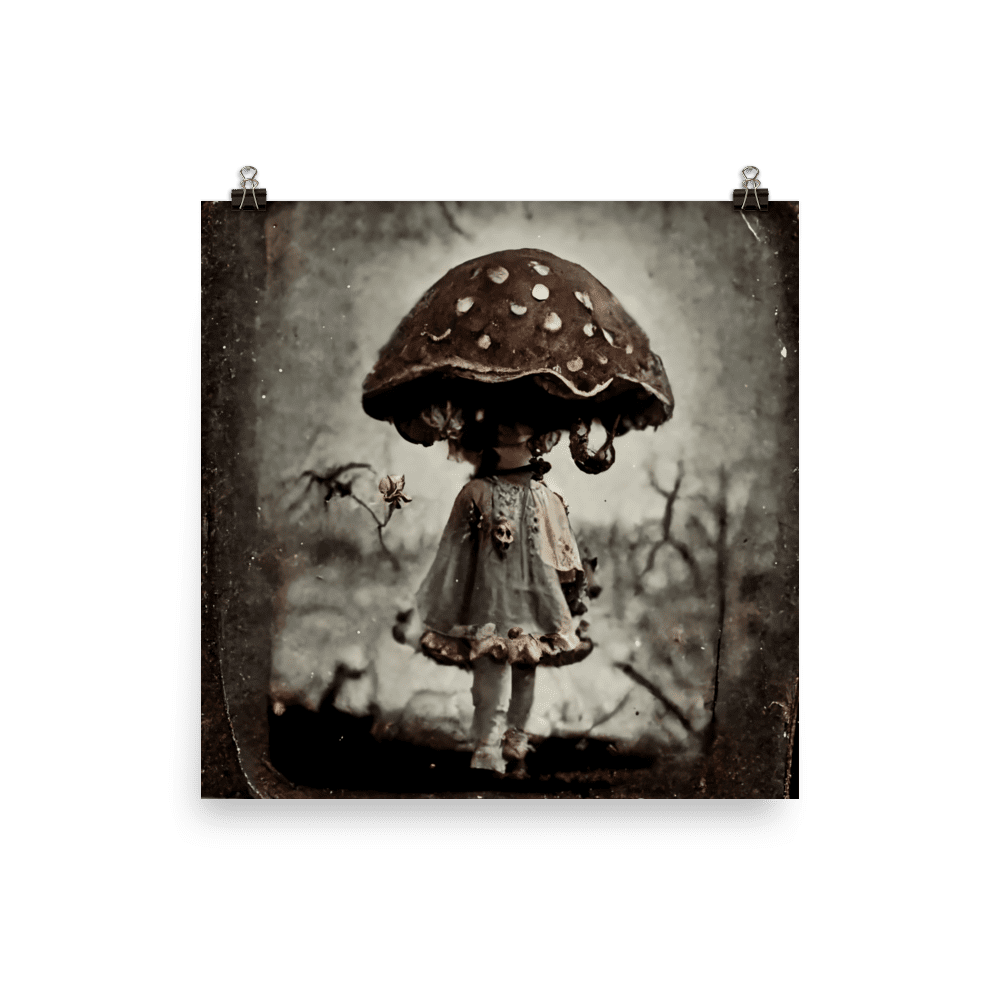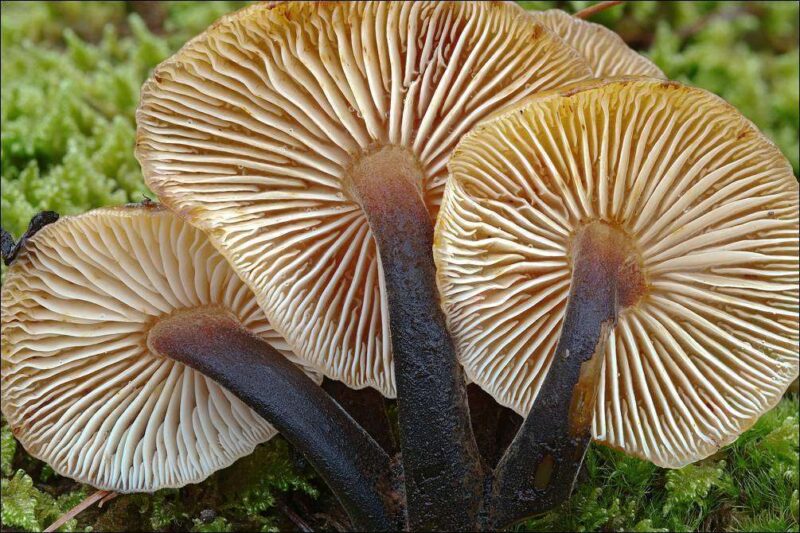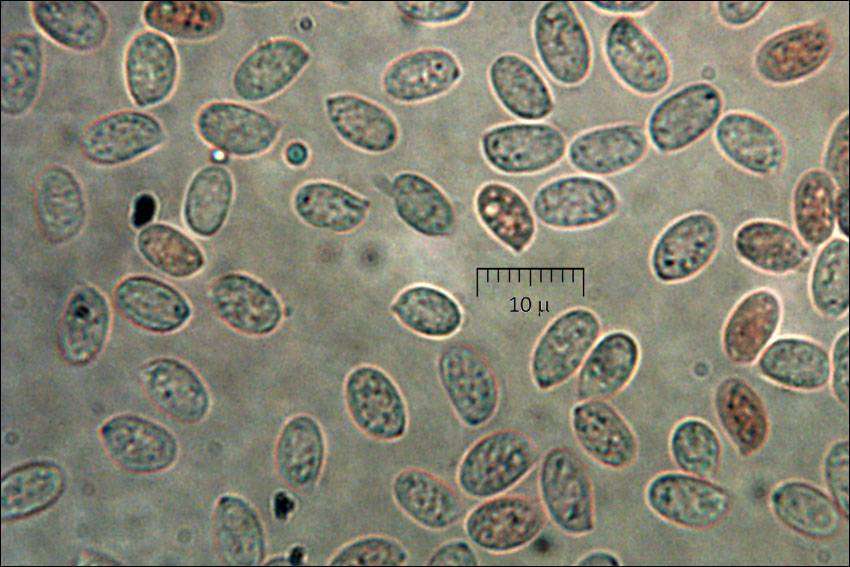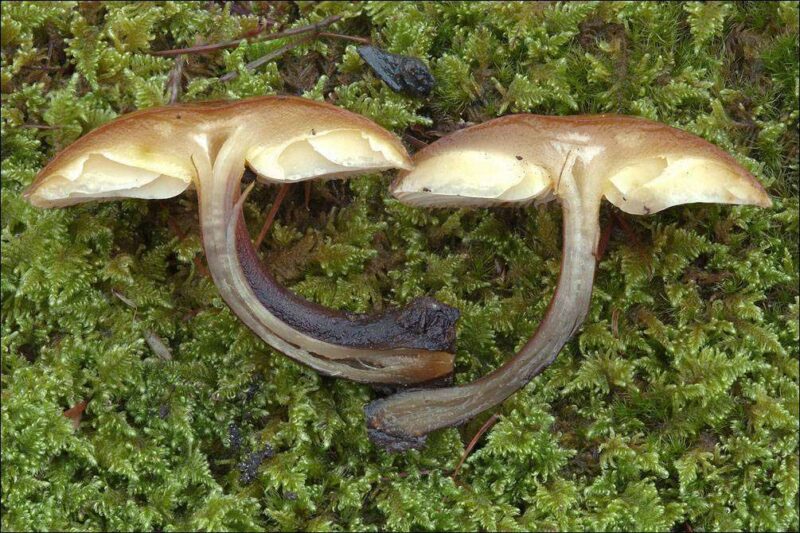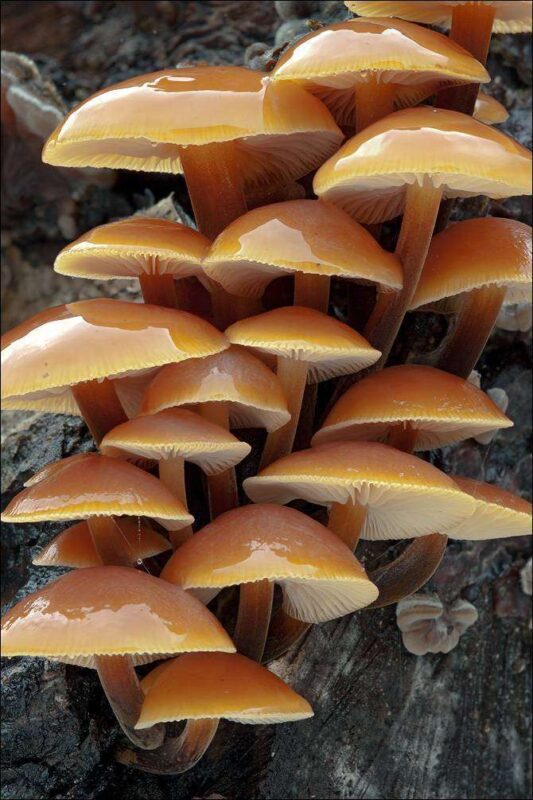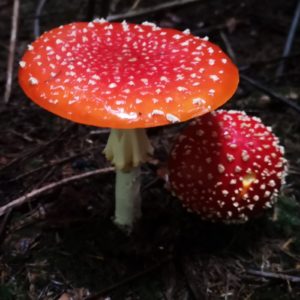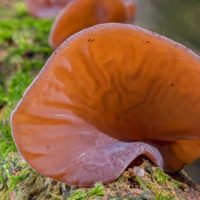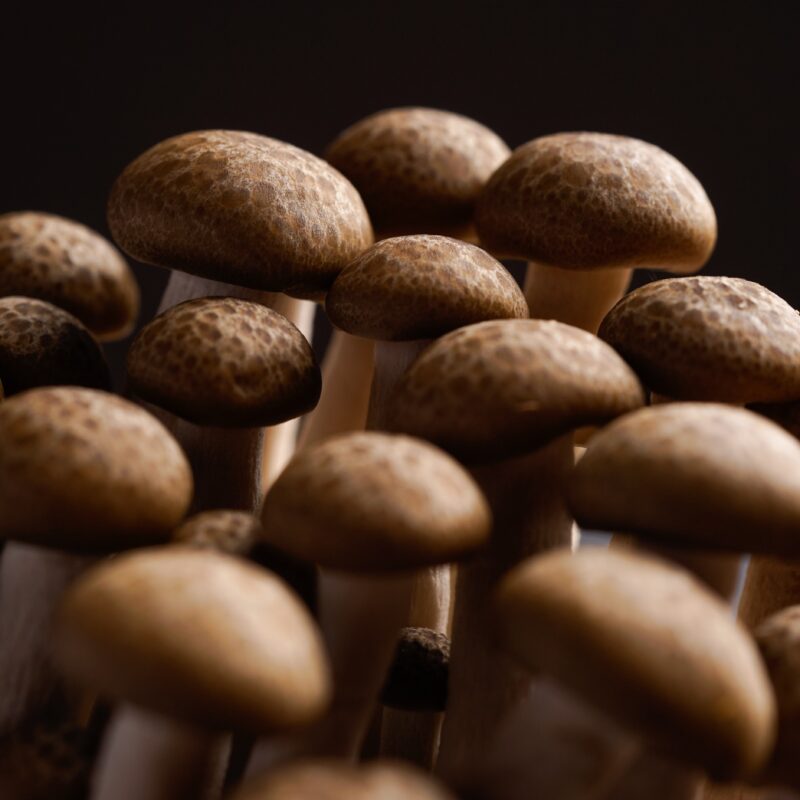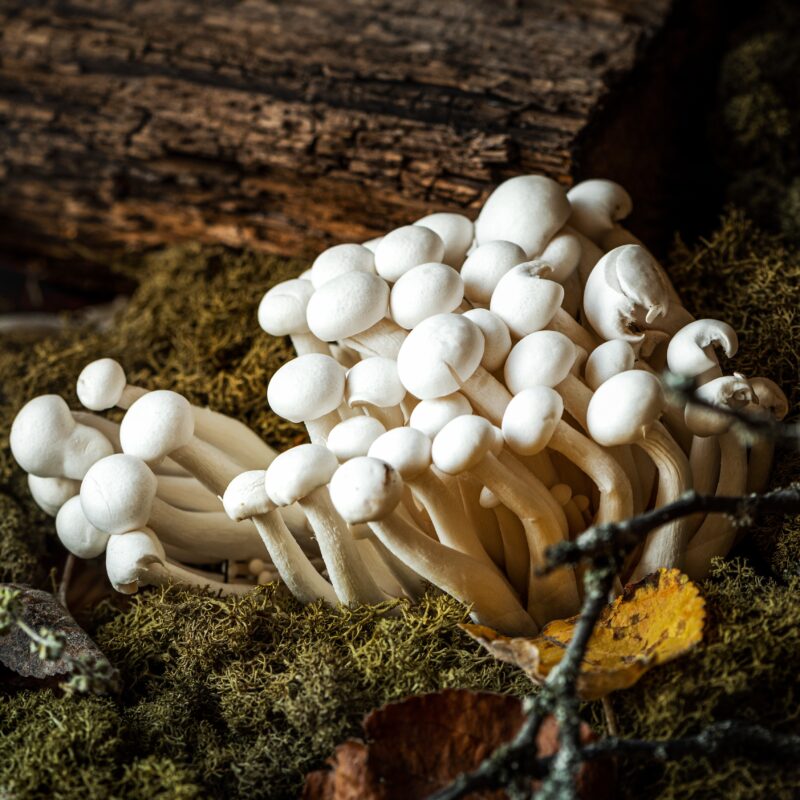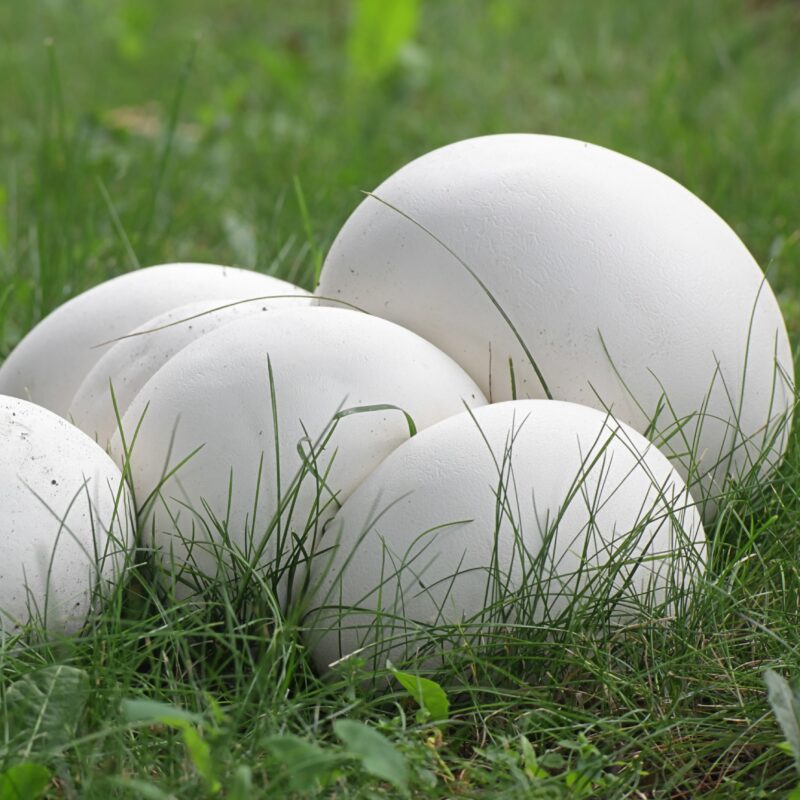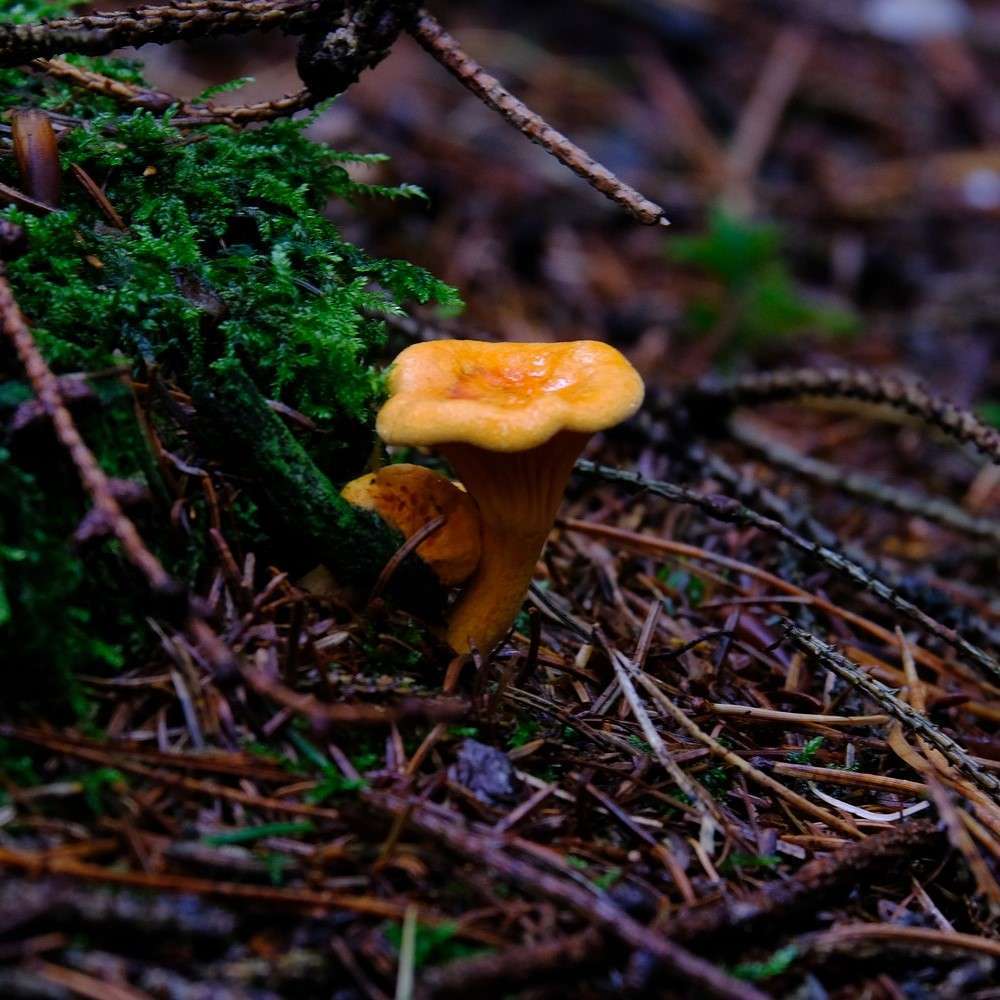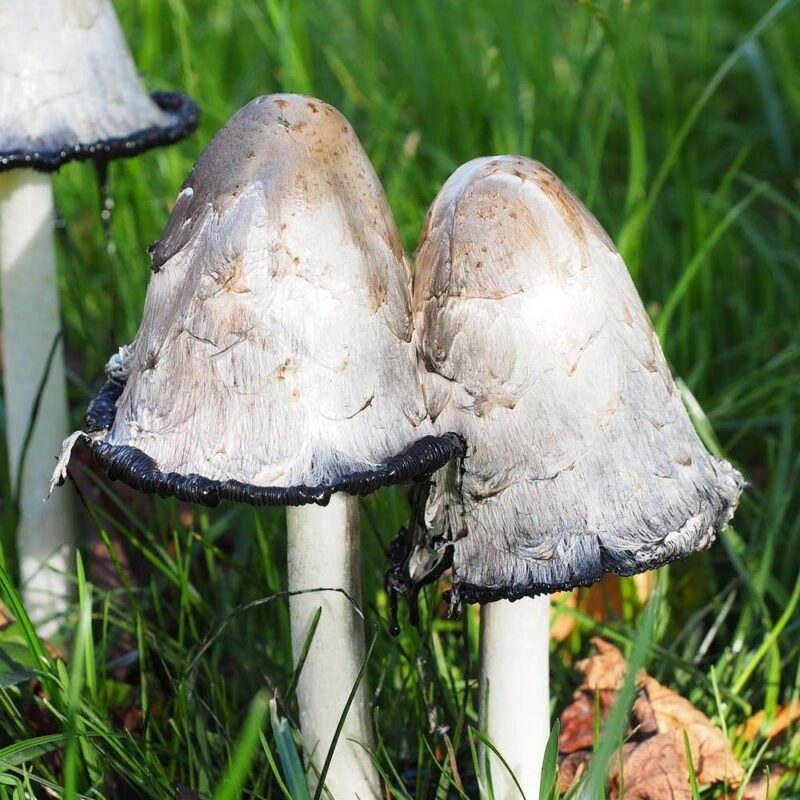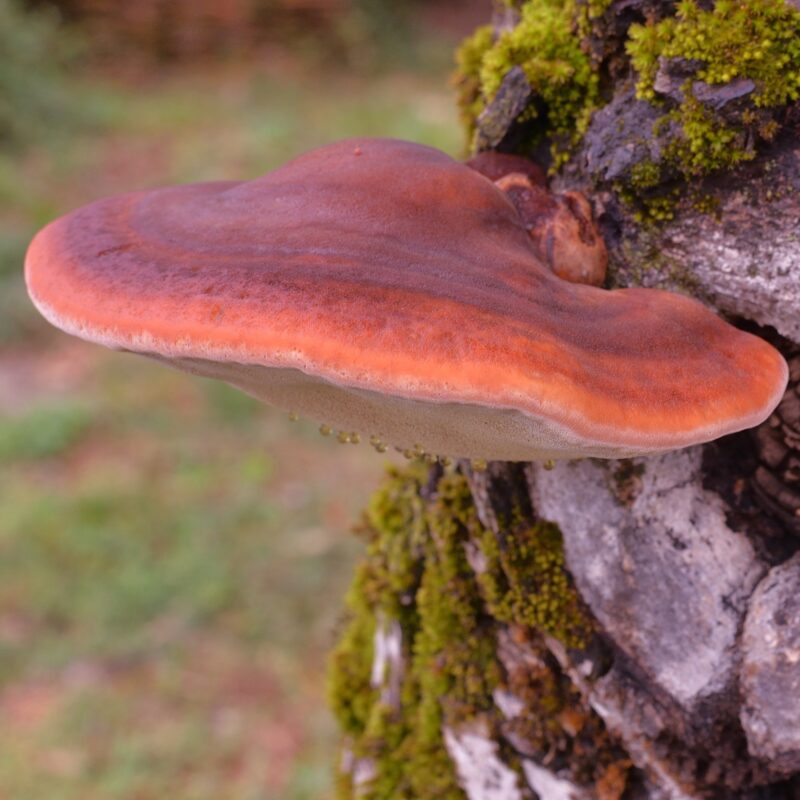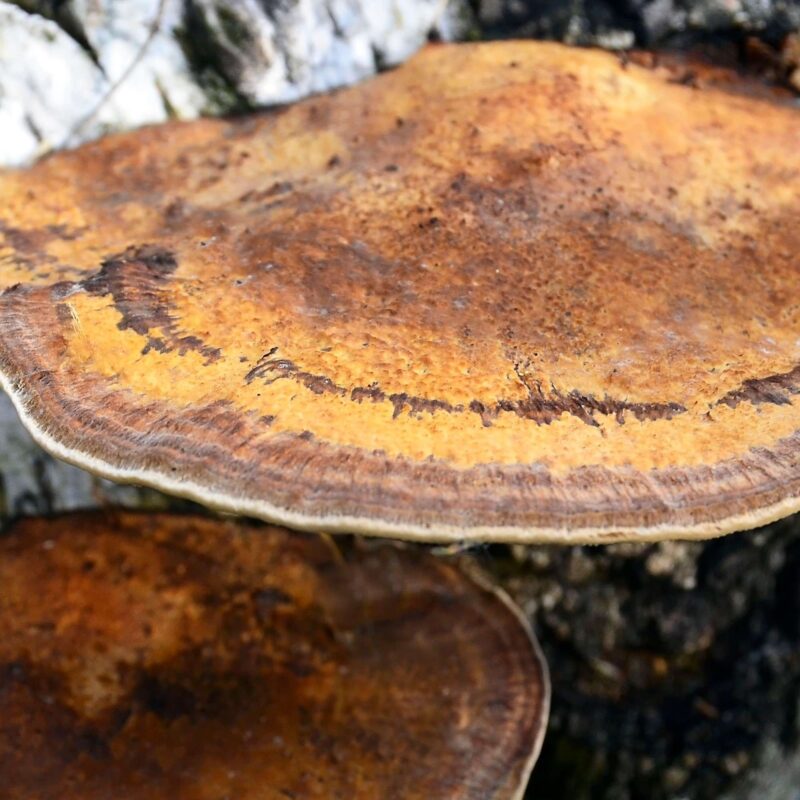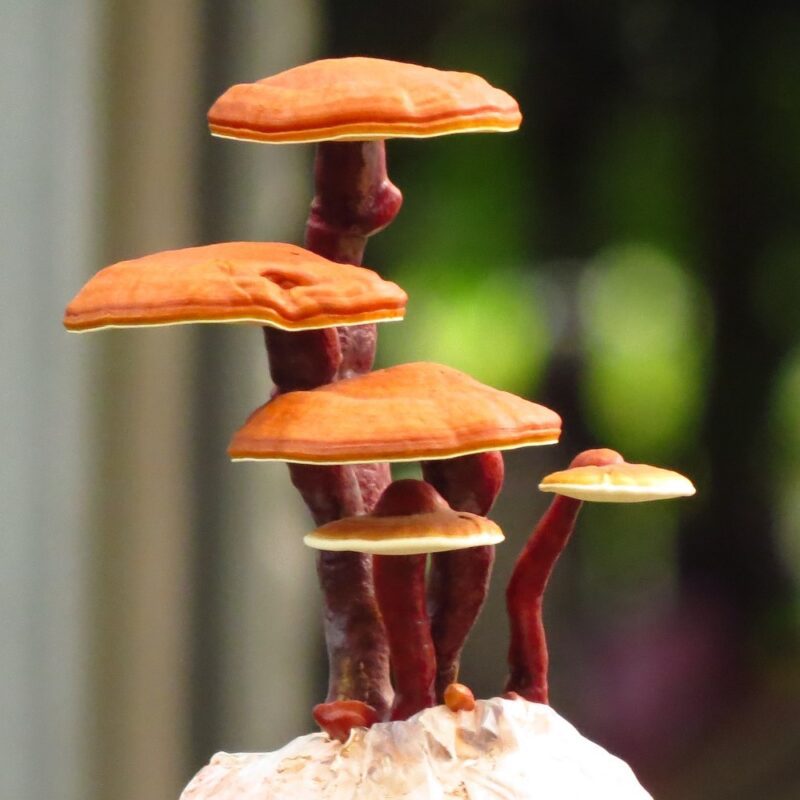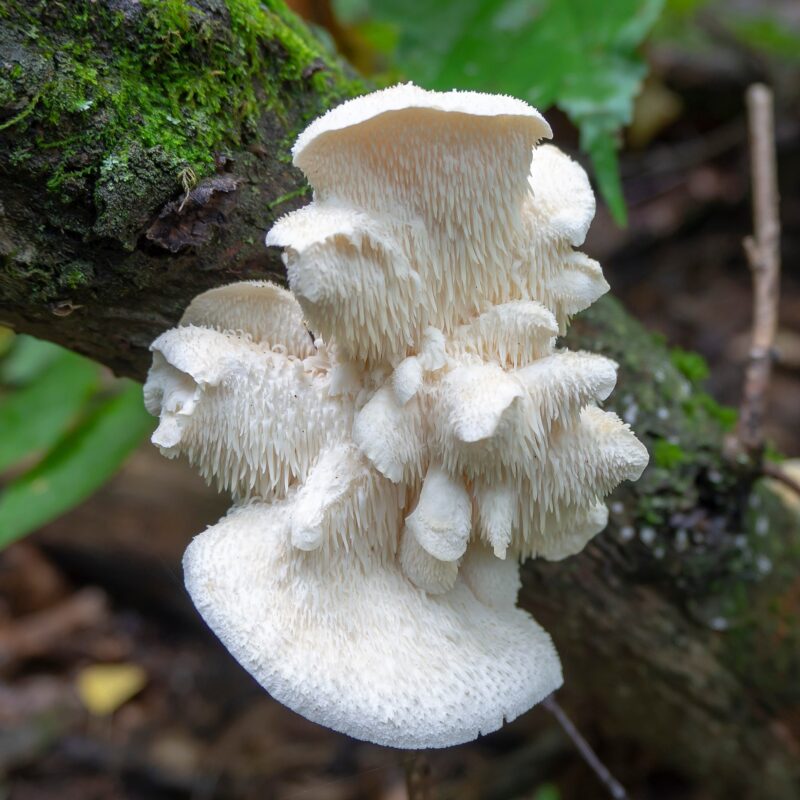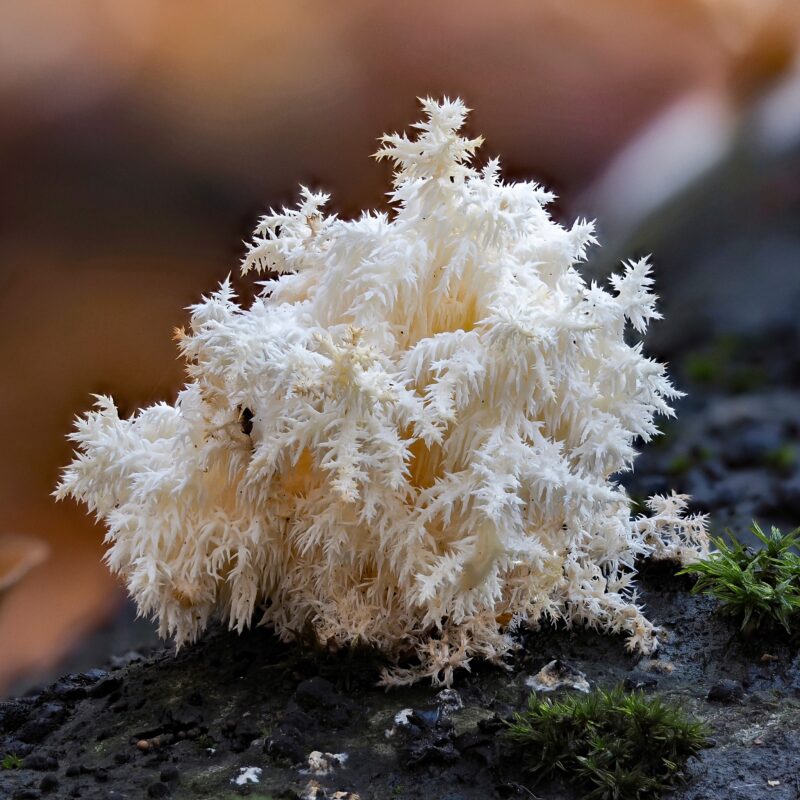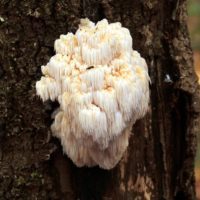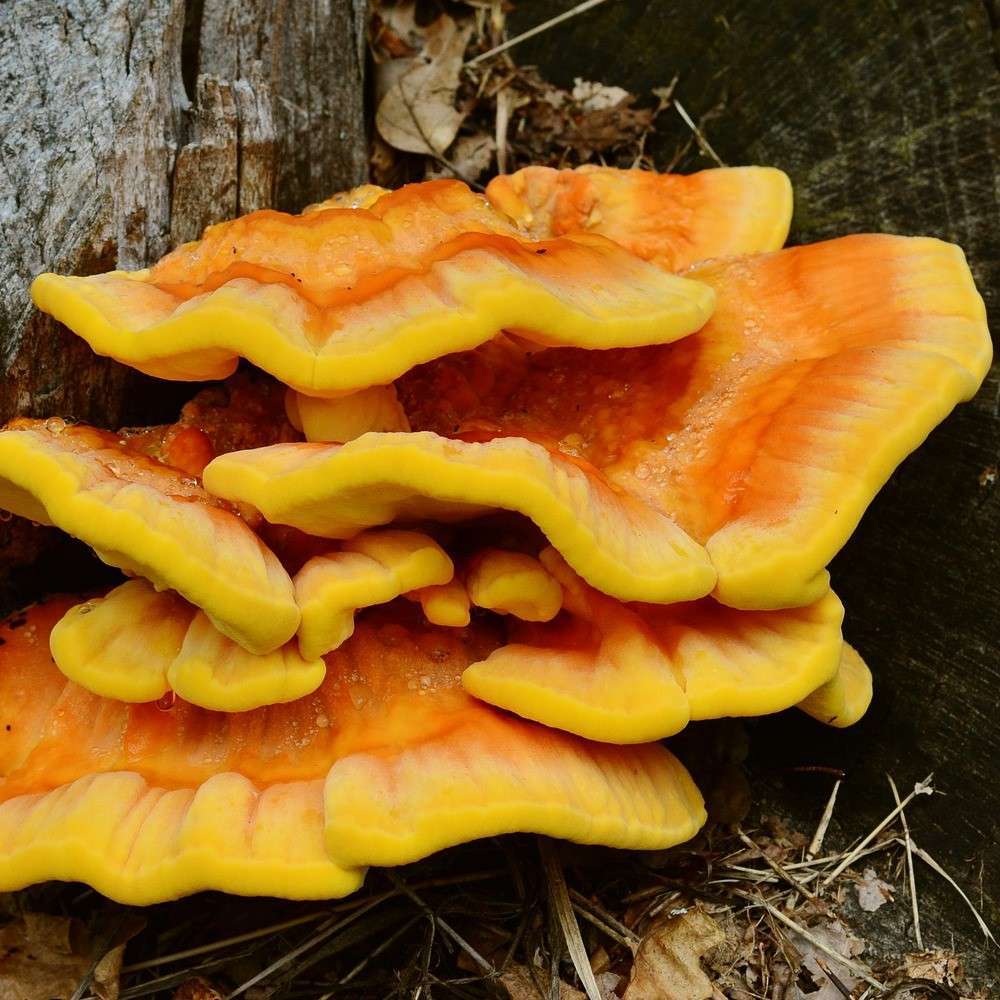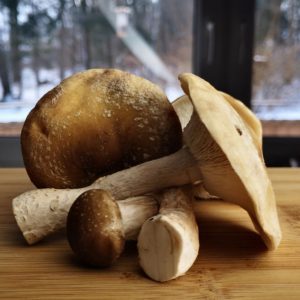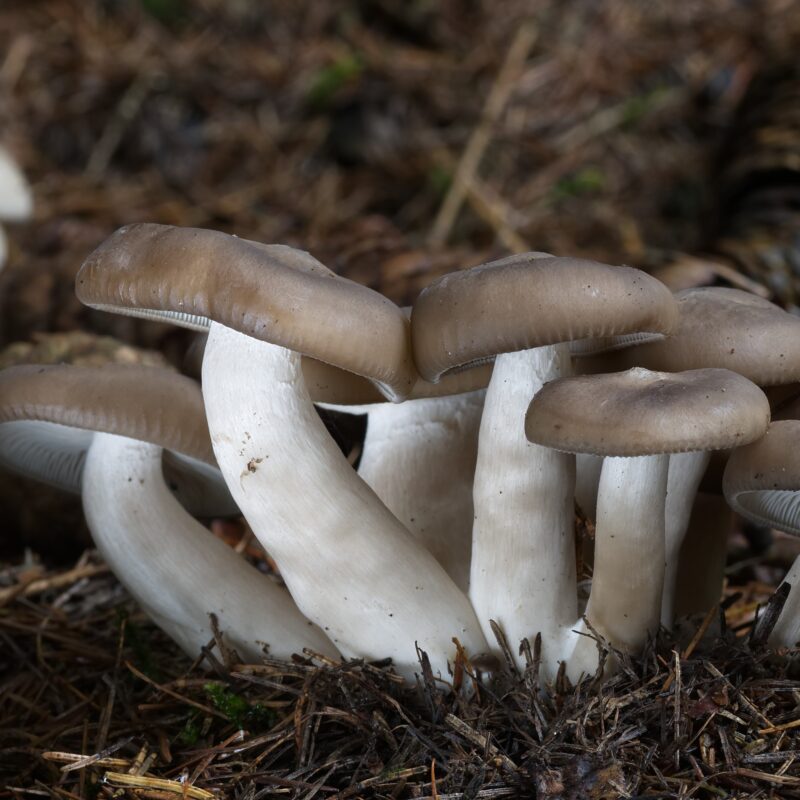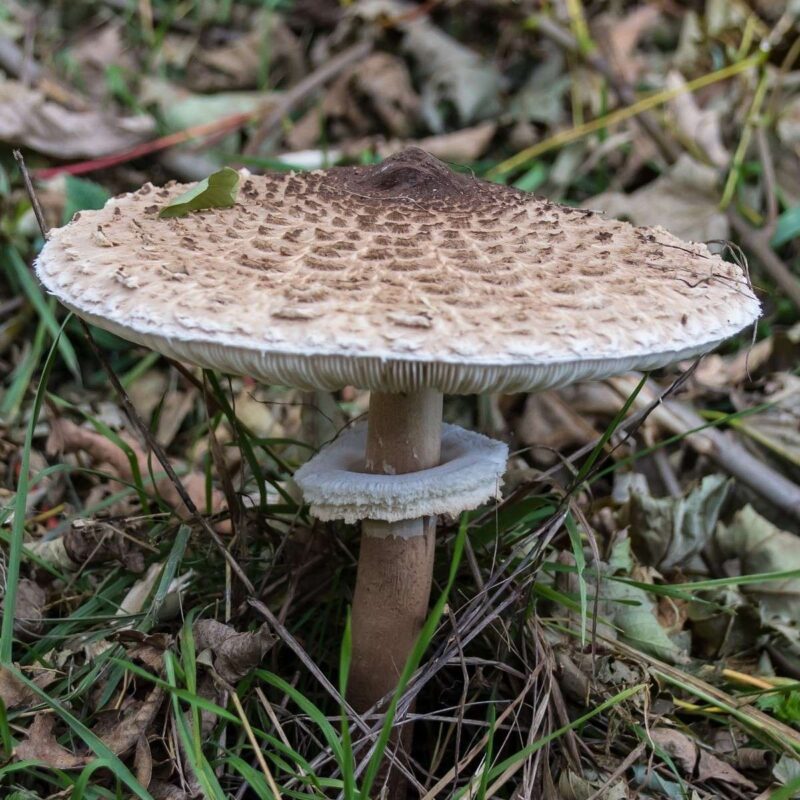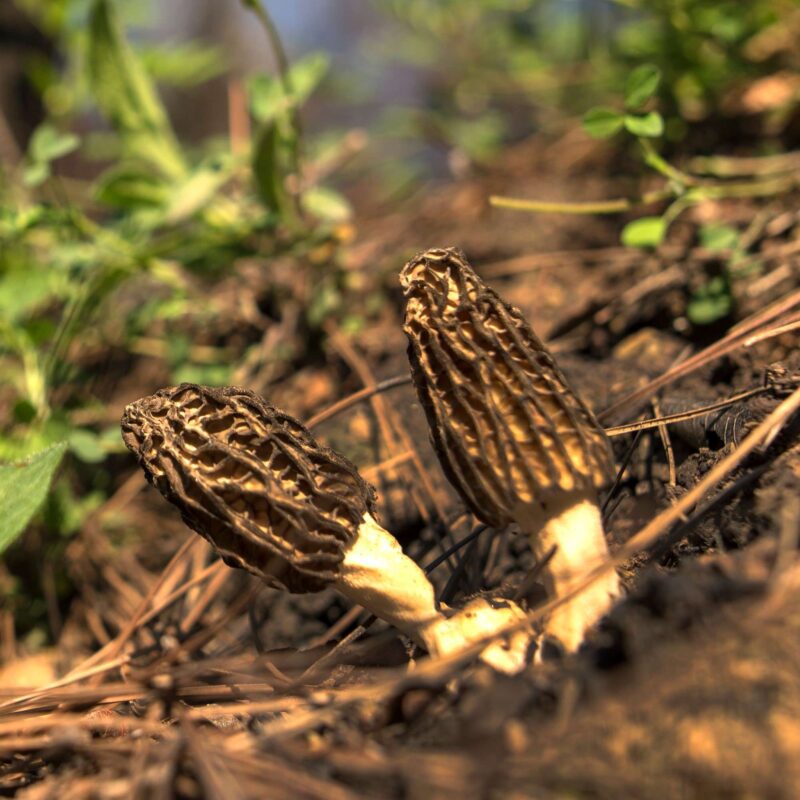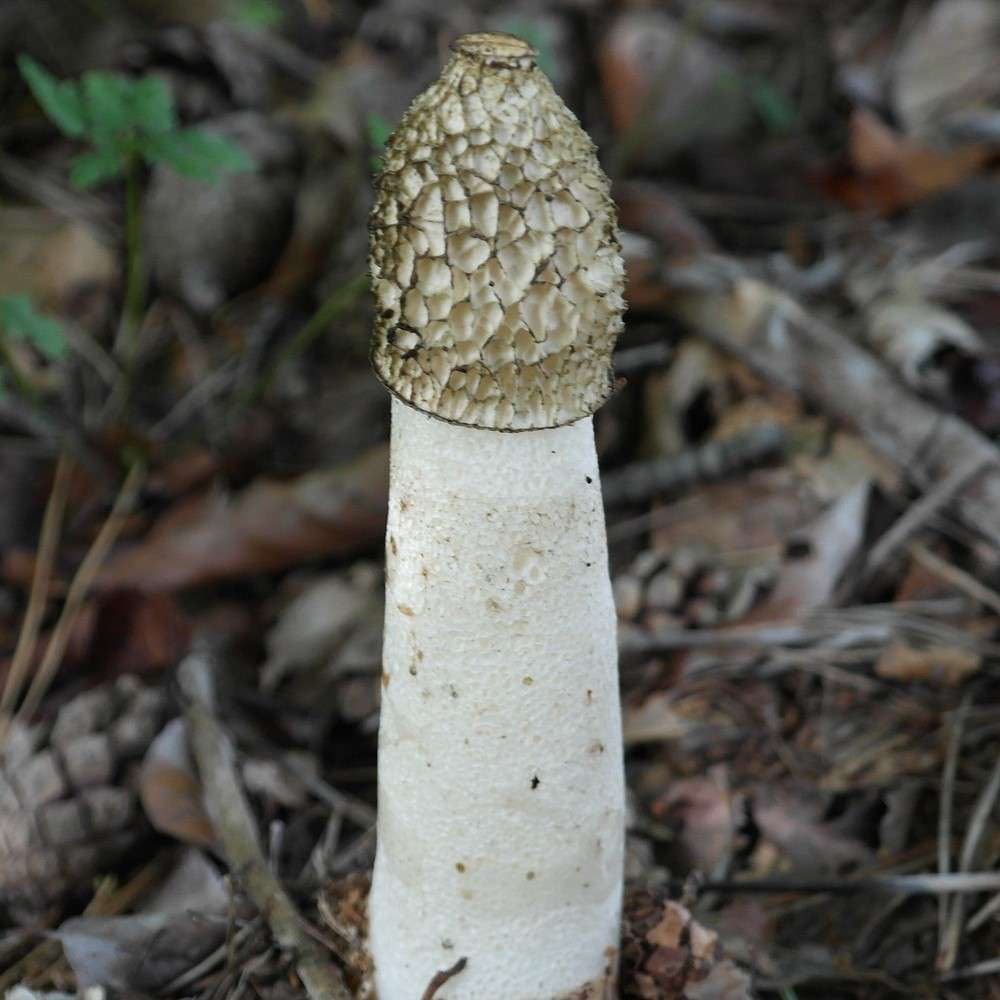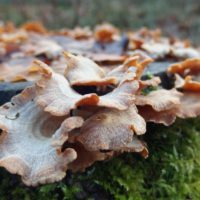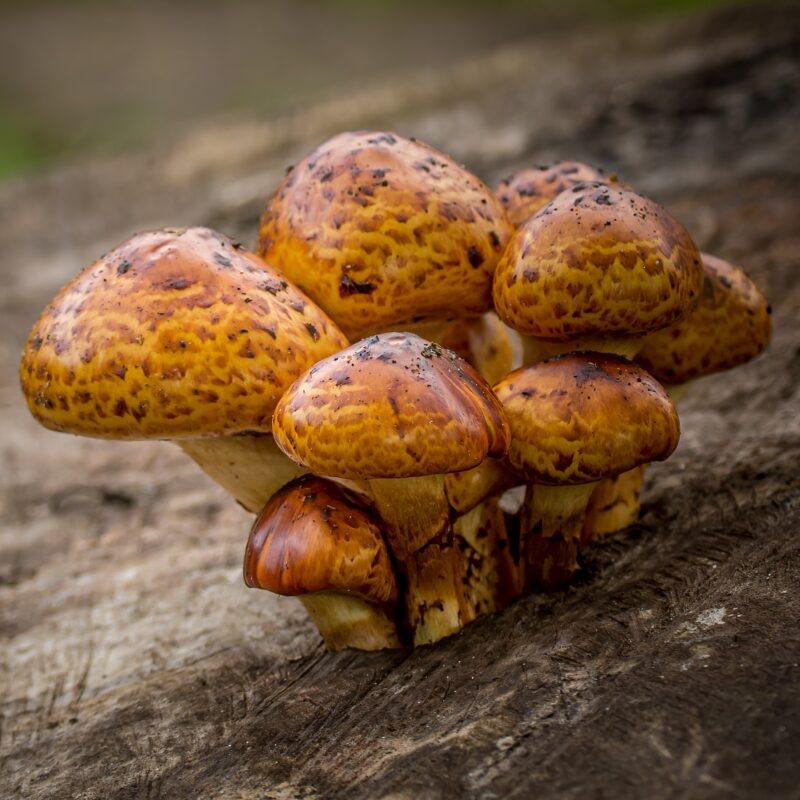Description
Properties
Flammulina velutipes, Syn.: Collybia velutipes is a species of mushroom in the family Physalacriaceae. It is an edible mushroom, but is also cultivated in East Asia, where it is marketed as enoki (Japanese 榎 or エノキ). In natural habitats, the small, frost-resistant fruiting bodies grow in cool temperatures during the winter months, which is why the species is also called a winter mushroom. In contrast, the trivial names velvet foot or velvet foot ruffles refer to the velvety texture of the stalk.
Uninformed collectors may confuse Flammulina velutipes with the edible Horseshoe Fungus or the dangerous Poisonous Galerina. The clearest distinguishing feature is the velvety, always ringless stalk of the velvet-footed ruffles.
A native winter mushroom whose fruiting bodies even survive frost. In Japan it is the most cultivated mushroom after the shiitake. There it is produced in bottles, on which a collar is placed after fruiting, so that the mushroom grows as a tightly packed clump of dozens of individual Flammulina velutipes.
The present cultivated line from Korea impresses with its intense golden color.
Flammulina velutipes generally strengthening the immune system, contains many vitamins and is said to be cancer-inhibiting as well as reducing blood pressure, blood sugar and cholesterol. The water-soluble polysaccharide flammulin, is 80-100% effective against Sarcoma 180 and Ehrlich carcinoma according to Ying (1987). Ikekawa (1968) reported anticancer activity from extracts of this mushroom. Zeng (1990) and Qingtian (1991) have published studies of the anti-tumor properties of this mushroom.
Flammulina velutipes is of particular importance in Japanese cuisine, where it is known as enokitake (榎茸 or エノキタケ) or enoki for short, where it is the most cultivated edible mushroom after the shiitake. A total of about 100,000 tons of this mushroom are produced. Thus, the velvet foot rubbish ranks sixth in the world among the most cultivated edible mushrooms. It also belongs to the medicinal mushrooms, but is less important.
In Europe, too, Flammulina velutipes is well known to mushroom connoisseurs as a tasty edible mushroom that appears especially in the cold season, when the other mushroom flora has largely stopped growing due to the winter cold.
NASA sent into orbit aboard the space shuttle to test the mushroom’s reaction to zero gravity. Aswell their shielding against radioactive radiation.

© amadej trnkoczy (amadej)
1. Growing
Affiliate Partner
Growing Procedure
Non-sterile inoculation of logs and stumps of native woods is easily possible. The fungus likes poplar, willow, ash and birch wood. Good cultivation success of Flammulina velutipes is achieved indoors on a standard recipe for wood decomposers.
Slim culture containers that can be set up later to save space, and from which the mushrooms later grow only out of the top, are a better choice for swarm-fruiters like Enokis than large culture bags. Reduce the hatching opportunities you provide for the fungus after maturity and a slight cold shock to provoke clump formation. Be sure to avoid large-scale opening of the substrate.
To initiate subsequent waves, return the culture to a slightly warmer temperature after harvesting Flammulina velutipes.
The incubated crop needs a 3-week maturation period and benefits from cold shock. The fungus requires little light for culture in bottles or pouches.
Growing
Agar Culture Media: PDYA, MYA, OMA, or DFA.
Cropping Cycle: 2-3 crops, 10-12 days apart
Containers for fruiting: Polypropylene bottles (quick handling and harvest), the stemps will grow long, 6 inches deep is perect, hardwood fruiting blocks
Biological efficiencies: 150%
Substrates: A variety of hardwoods can be used ( poplar, alder, oaek, aspen, willow, birch, beech, etc.), softwoods are generally less productive, PH range for fruiting 4-5, you can grow it on paper
Growing Characteristics
-In culture, the morphology of Flammulina velutipes is highly variable, because it is extremely sensitive to cabon dioxide and light. Cultivated species have long yellowish stems, small white to yellowish caps, as the spores mature, the caps darken untill brown
-small-capped mushrooms commonly form along the inside periphery of the petri dish or during cold storage of culture slants
-this fungus can freeze, thaw, and keep growing
S
|
P
|
F
|
|
|---|---|---|---|
Temp °C |
21-24 | 4-10 | 10-16 |
Relative Humidity % |
95-100 | 95-100 | 90-95 |
Duration d |
14-18 | 3-5 | 3-8 |
CO2 ppm |
>5000 | 2000-4000 | 2000-4000 |
FAE per h |
0-1 | 2-4 | 2-4 |
Light lux |
– | 20-50 | 20-50 |
Natural Habitat
In the period from September to April, Flammulina velutipes often occurs abundantly on stumps, trunks (also on living trees) and fallen branches of deciduous woody plants, very rarely also on conifers, and occasionally on underground wood. The velvet-footed briar shows a special preference for the genera Salix (willows), Populus (poplars), Fraxinus (ashes) and elder, often also for elm species damaged by the “elm dieback”.
Its geographic distribution includes temperate and cold regions in the northern hemisphere of the world such as China, Siberia, Asia Minor, Europe, North America, and Japan, as well as Australia in the southern hemisphere.
Predominantly on hardwoods, occasionally also on conifers, mostly growing in late autumn to early winter.
2. Identification
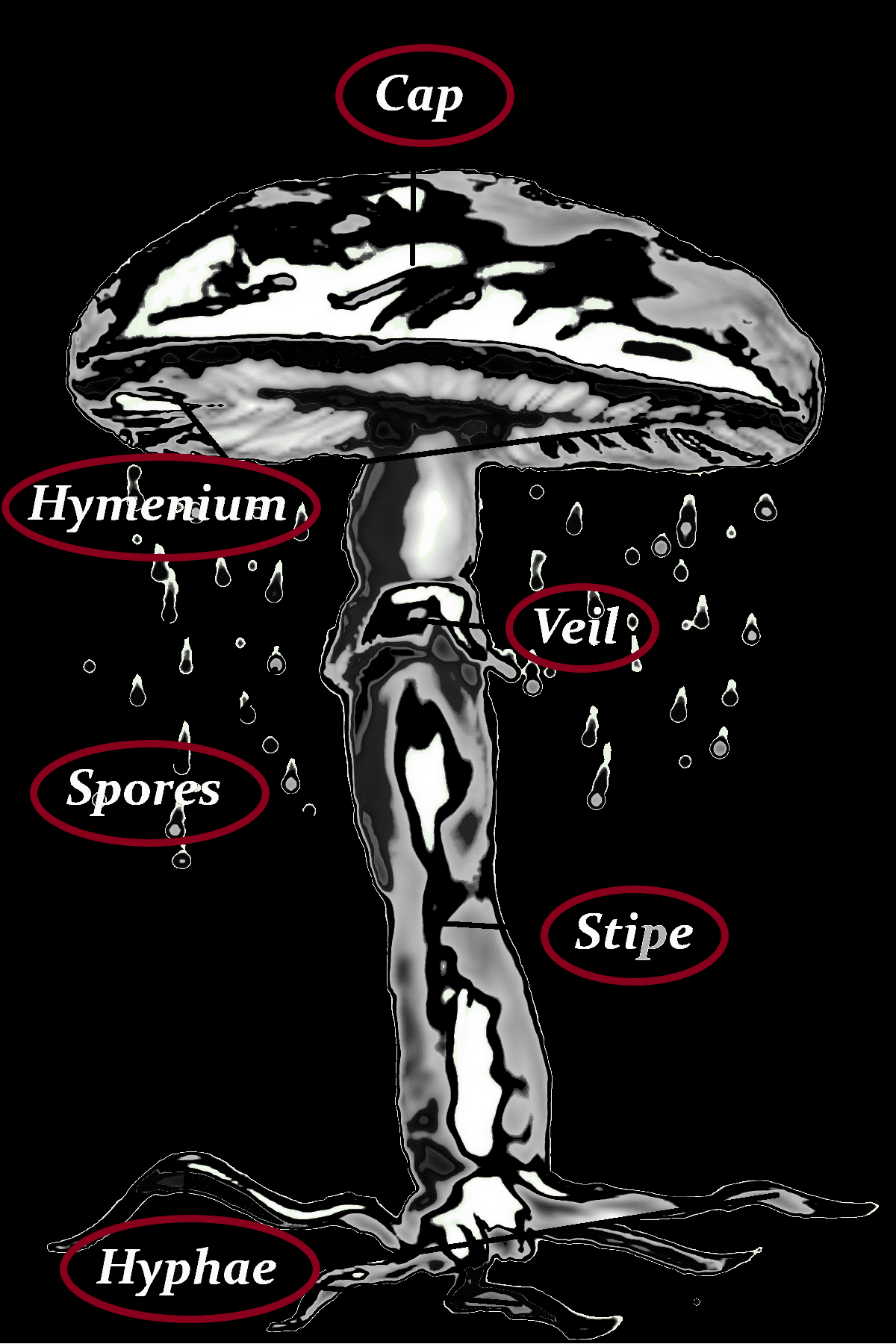
Cap
-1–5 cm Ø
-convex to plane, upturned in age
-light to dull yellowish to -yellowish-brown to orange-brown
-smooth, viscous when wet
Spores
-white
-6–8 × 3–4 µm
-European 8–9 × 4.5–6 µm, Japanese 5–7.5 × 3–4 µm, strong variety
-ellipsoid
Danger of confusion
Galerina marginata, Gymnopilus penetrans, Flammulina fennae, Flammulina elastica, Flammulina ononidis, Gymnopilus penetrans, Gymnopilus picreus, Pholiota spumosa, Gymnopilus sapineus
Hymenium
-adnexed
-gills
-white to yellow
-attached to the stem
Stipe
-bare
-usually short 2-8 cm
-yellow to yellowish brown, darkening with age
-near the base covered with a thick fur of velvety, fine, brown hairs
Hyphae
-white
-longitudinally linear
-becomes finely appressed and tinged with increased age and is light brown to speckled with golden yellow-brown zones
-surface becomes rough, resembles fine sandpaper and sometimes bulges in the earliest stage of primordia formation
3. Consuming
Gourmet
A tasty, edible mushroom which appears aswell in winter.
Smell
-grain spawn: musty smelling, not pleasant
-mushroom: tasty, mushroom like
Taste
mushroom like, sweet
Flesh
white to light yellow
Nutritional content per 100g
| Proximates: | |
| Water | 88.3g |
| Energy (Atwater General Factors) | 44kcal |
| Energy (Atwater Specific Factors) | 37kcal |
| Nitrogen | 0.39g |
| Protein | 2.42g |
| Total lipid (fat) | 0.24g |
| Ash | 0.91g |
| Carbohydrates: | |
| Carbohydrate, by difference | 8.14g |
| Minerals: | |
| Calcium, Ca | 1mg |
| Iron, Fe | 1.28mg |
| Magnesium, Mg | 12.8mg |
| Phosphorus, P | 84mg |
| Potassium, K | mg |
| Sodium, Na | <2.49mg |
| Zinc, Zn | 0.48mg |
| Copper, Cu | 93mg |
| Manganese, Mn | 0.09mg |
| Selenium, Se | <2.5µg |
| Vitamins and Other Components: | |
| Thiamin | 12mg |
| Riboflavin | 0.24mg |
| Niacin | 6.99mg |
| Vitamin B-6 | 119mg |
| Biotin | 12µg |
| Vitamin D (D2 + D3), International Units | 0IU |
| Vitamin D (D2 + D3) | 0µg |
| Vitamin D2 (ergocalciferol) | 0µg |
| Vitamin D4 | 0µg |
| Amino acids: | |
| Ergothioneine | 26mg |
© U.S. Department Of Agriculture
4. Data
other names
| Bunun (Taiwan) | sinapsakut |
| Chinesisch (traditionell) | 榎茸 |
| Chinesisch (traditionell) | 毛腿冬菇 |
| Chinesisch (traditionell) | 絨柄小火菇 |
| Chinesisch (vereinfacht) | 毛腿冬菇 |
| Chinesisch (vereinfacht) | 金针菇 |
| Deutsch | Gemeiner Samtfußrübling |
| Dänisch | Gul fløjlsfod |
| Englisch | Enoki Mushroom |
| Englisch | Velvet Foot |
| Englisch | Velvet shank |
| Estnisch | puidu-sametkõrges |
| Finnisch | talvijuurekas |
| Französisch | Collybie à pied velouté |
| Japanisch | enokitake |
| Japanisch | エノキタケ |
| Koreanisch | 팽이버섯 |
| Litauisch | Juodkotė ugniabudė |
| Niederländisch | Gewoon fluweelpootje |
| Norwegisch | vintersopp |
| Polnisch | Płomiennica zimowa |
| Russisch | Зимний гриб |
| Russisch | Опёнок зимний |
| Schwedisch | Vinterskivling |
| Slovene | zimska panjevka |
| Slowakisch | Plamienka zimná |
| Spanisch | Hongo de Invierno |
| Tschechisch | penízovka sametonohá |
| Türkisch | kadife saplı mantar |
| Ukrainisch | Опеньок зимовий (Гриб зимовий) |
| Ungarisch | Téli fülőke |
| Wissenschaftl. Name | Collybia velutipes |
| Wissenschaftl. Name | Flammulina velutipes |
| Wissenschaftl. Name | Flammulina velutipes velutipes |
other names
Collybia velutipes, Enoki, Enokitake (Japanese for “The Snow Peak Mushroom.” Enokidake is an alternative spelling), Nametake (“Slimy Mushroom”), Yuki-motase (“Snow Mushroom”), The Winter Mushroom, The Velvet or Furry Foot Collybia, The Golden Mushroom (Thailand), Samtfußrübling, Gemeiner Samtfußrübling, Winterrübling, Winterling
| Kingdom | Fungi |
|---|
| Division | Basidiomycota |
| Class | Agaricomycetes |
| Order | Agaricales |
| Family | Physalacriaceae |
| Genus | Flammulina |
| Species | F. velutipes |
| Ecology | Saprotrophic |




